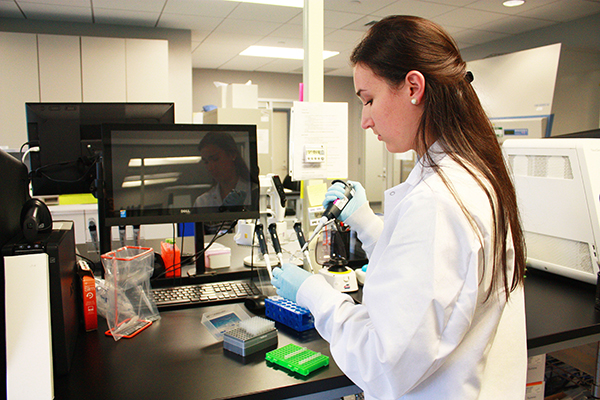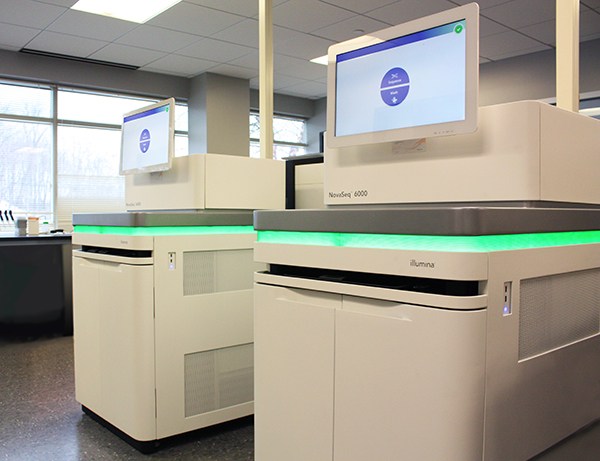Helen Albert Writer GEN
Despite Data and Privacy Challenges, Decreasing Cost Ushers in the Age of Personalized Whole-Genome Sequencing
The human genome project cost $3 billion and attracted high expectations about the impact its completion would have on human health both in treating disease and revolutionizing drug development.
The greater affordability of and advances in sequencing technology made since the project was completed in 2003 (see “The Human Genome at 15“) has made it much more accessible. For example, the U.S.-initiated Personal Genome Project and the U.K.-based 100,000 Genomes Project, among others, are making use of whole-genome sequencing (WGS) to advance personalized medicine research.
Today, bulding on the development of direct-to-consumer genotyping tests such as those provided by 23andMe and Color Genomics, it is now possible for individuals to access WGS directly. Veritas Genetics, co-founded by Personal Genome Project founder and Harvard researcher George Church, Ph.D, will sequence your genome for $999, albeit in collaboration with your physician. Other companies such as U.S.-based Sure Genomics and Europe’s Dante Labs also offer similar options to consumers.
WGS on a wider scale clearly has the potential to help develop more effective and wide ranging personalized medicine, there are concerns about how best to protect those who undergo sequencing from data misuse or genetic discrimination. There are also important ethical and regulatory issues that need to be considered.

Veritas Genetics is ramping up its operations for what its founders believe will be nearly “universal demand” for personal genomics.
Power to the People
Church set up the Harvard Personal Genome Project in 2005, which now has more than 5,000 participants. It is designed to be an open, shareable resource for researchers. In 2012, the project was extended to Canada, and since then has opened additional centers in the U.K., Austria, South Korea, and China.
Church is a strong proponent of personal genomics. “One of the key needs is to help families avoid the 5% of births with very serious genetic diseases,” he told Clinical Omics. “Other compelling applications include avoiding inherited cancers by preventative surgery, cardiac risk mitigation with drugs and contingent diagnostics and pharmacogenomics.”
Preston Estep III, Ph.D, is chief scientific officer of Veritas Genetics, which has links to the Personal Genome Project. Veritas currently reports on a small set of very reliable genetic traits and associations. These include carrier status of pathogenic recessive alleles and information on efficiency of drug metabolism. Estep explained that Veritas provides a private option for individuals who do not wish to make their genetic information publically available through the Personal Genome Project.
In the age of epigenetics, genetics is only one factor influencing health. Joe Grzymski, Ph.D, and colleagues from the Desert Research Institute and Renown Health in Nevada are sampling genomic data as part of an integrated public health program, the Healthy Nevada Project, which is looking at population and environmental health factors, as well as genomic data.
The pilot phase of the project enrolled 10,000 people and finished in Dec 2017. The extended phase will recruit early this year and is aiming to include 40,000 people with all participants undergoing exome sequencing.
Return on Investment
Last year the sequencing giant Illumina introduced new technology designed to enable a ‘$100 genome’, suggesting that the technology will soon become even cheaper than the current $1,000 benchmark. Church believes it is already cost effective when used to test for severe Mendelian disorders that have a large associated treatment cost. Grzymski agrees noting that there is evidence to suggest personal genome sequencing can be cost-effective when used to test for BRCA1/2, Lynch Syndrome, and Familial Hypercholesterolemia.
But personal genome sequencing through companies such as Veritas, outside of tests suggested to diagnose a current medical condition, is now open only to the select few who can afford it. “We don’t try and get medical reimbursement yet, but that’s just because the healthcare system in the U.S. in not quite ready for widespread adoption of whole genome sequencing,” said Estep, “but we think that that time is coming.”
Further, Johnny Kung, Ph.D, director of new initiatives at the Personal Genetic Education Project at Harvard, pointed out that publicly funded healthcare systems such as those in the U.K. or Canada are likely to struggle with assessing the economic value of personal genome sequencing. “Questions about whether, for who, and for what potential applications or conditions such testing should be paid for by the inevitably limited public resources are likely to arise.”
Big Data Challenges
It is predicted that approximately 2 billion human genomes will be sequenced by 2025, which, if true, will be an enormous amount of data to process. There is agreement among many scientists that individuals participating in personal genome sequencing should have direct access to, and control of, their genetic data. But that there should be some clinician or genetic counselor involved to help minimize misunderstanding and misinterpretation of the information.
“Clear communication with participants is key,” emphasized Gryzmski. “The healthcare system cannot be so paternalistic that it dictates everything that is being done with the data, whether or not the participant chooses to have it.”
The speed of advancement in the field of genetics means that many primary healthcare providers do not know currently know enough about interpreting genomic data to adequately advise their patients on the implications if they choose to have their genomes sequenced.
“Getting the information into the care delivery setting and educating the providers of care is the key challenge,” said Grzymski. “The information does no good if not integrated into care.”

Veritas Genetics employs the latest sequencing technologies including these NovaSeq 6000 sequencers from Illumina.
Regulating the Unknown
In 2013, the U.S. Food and Drug Administration stopped 23andMe from selling genetic health risk tests, citing concerns about accuracy and potential misinterpretation of results. This ban was lifted last April and in a statement released in November, the agency went one step further and announced that new genetic health risk tests would be “exempted from premarket review under certain conditions,” essentially making it easier for companies like 23andMe to reach the market.
“Given the rapid development of commercially available screening panels, I think we’re getting a lot better at approval, speed, and development, although there’s work to be done,” commented Jacob Sherkow, a specialist in legal issues affecting the bioscience sector at New York Law School. He noted there are many legal problems that could arise from personal genome sequencing including patent infringement, regulatory issues, and liability concerns—for example, a patient choosing to get a preventative mastectomy based on a cancer screening test that is later found to be unnecessary.
“Companies should strive for both analytic and clinical validity in all the tests they do,” he emphasized. “Consumers can do a lot to educate themselves too about the reality of these tests, their accuracy, and the risks they run.”
To address potential privacy concerns surrounding an individual’s genomic data, the Genetic Information Nondiscrimination Act (GINA) was introduced in the U.S. in 2008. with similar laws passed in other countries. But GINA has been criticized for not providing protections related to life, long-term care or disability insurance.
“It goes some way towards protecting people, but I think there definitely still needs to be a lot more societal conversations about these broader issues,” commented Kung.
An important consideration for any form of genetic health testing is how useful it is for the person being tested to know about a specific variant, particularly if it increases the risk for a late onset disease with no current treatment.
This is something Veritas is working on to incorporate in their testing services. “Even for something that’s very late onset like ApoE-E4 that increases the risk for dementia, I think it’s really important that people opt in to get that kind of information,” said Estep.

By some estimates, approximately 2 billion human genomes will be sequenced by 2025.
Future Directions
“We are probably on a tipping-point today, which leads from close to zero demand to nearly universal demand for personal genomics, analogous to the change from zero to millions of website users in 1993,” commented Church.
The value of personal genome sequencing is becoming more widely recognized. While those who have had their genomes sequenced to date are mostly wealthy ‘early adopters’ or individuals taking part in research, it seems probable that this technology will become mainstream within the next decade.
“We are not going to see the use of the whole genome or exome for purely preventive care for apparently healthy people for a while,” suggested Estep, “but I think in that time frame it will definitely move into the clinic and be reimbursable.”
The Personal Genetics Education Project and similar organizations are rapidly improving the genetic literacy of the current and future generations. Software developers, such as those using the Sequencing.com platform (see “Revolutionizing Genetic DNA Analysis“), also have a key role to play in helping healthcare professionals and individuals manage the enormous amounts of data produced through personal genome sequencing.
“By 2025, the amount of genetic data is going to start to become the largest data source within the world. That means it’s really about how we protect that data and how we provide value surrounding it to the people that own it,” concluded Sequencing.com’s Colby.
This article was originally published in the March/April 2018 issue of Clinical OMICs. For more content like this and details on how to get a free subscription, go to www.clinicalomics.com.



